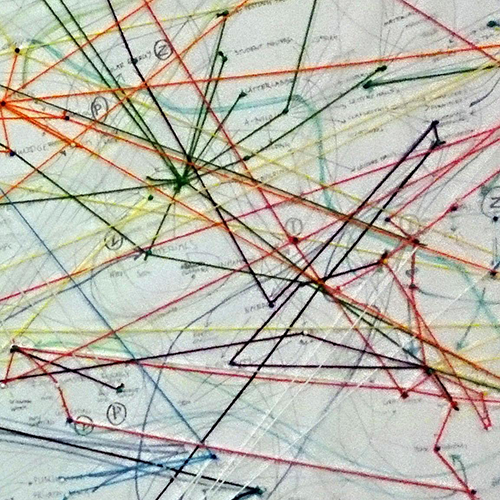Redesigning Systems Thinking
DOI:
https://doi.org/10.7577/formakademisk.1755Keywords:
System Oriented Design, Designerly competences, Systems Thinking.Abstract
The resent movement of Systemic Design seeks for new synergies between Design and Systems. While the usefulness of systems approaches in design has been fairly obvious, this paper argues that many core concepts in design are beneficial in systems thinking. This seems reasonable when it comes to the concept of Design Thinking. However, as this paper argues, the more practical core concepts of design are equally important. Designerly skills have been regarded as belonging mainly in the realm of traditional commercial design, whereas design thinking has been regarded as useful in strategic management settings. This paper argues against the idea of separating design thinking from design action. The skills and competences of design, such as the composition of the shape and form that are obvious in product design, are central to Systems Oriented Design (SOD). SOD is a version in the emerging pluralistic field of Systemic Design. The Systemic Design movement should recognise the core values of design and integrate them in systems thinking. This integration would contribute to innovation in both Systemic Design and systems thinking. Among the core competences of design discussed in the paper are composition, choreography, orchestration, the notion of the Gesamtkunstwerk and open-ended multi-scalar design strategies that allow for both structural and organic development. The paper provides examples to support its proposal for the use of concrete aesthetic principles to guide Systemic Design processes. This paper expands the working paper entitled “Holistic and dynamic concepts in design: What design brings to systems thinking”, which was presented at the RSD3 symposium (2014).

Downloads
Published
How to Cite
Issue
Section
License
Authors who publish with this journal agree to the following terms:
- Authors retain copyright and grant the journal right of first publication with the work simultaneously licensed under a Creative Commons Attribution 4.0 License that allows others to share the work with an acknowledgement of the work's authorship and initial publication in this journal.
- Authors are able to enter into separate, additional contractual arrangements for the non-exclusive distribution of the journal's published version of the work (e.g., post it to an institutional repository or publish it in a book), with an acknowledgement of its initial publication in this journal.
- Authors are permitted and encouraged to post their work online (e.g., in institutional repositories or on their website) prior to and during the submission process, as it can lead to productive exchanges, as well as earlier and greater citation of published work (See The Effect of Open Access).
- The author(s) must manage their economic reproduction rights to any third party.
- The journal makes no financial or other compensation for submissions, unless a separate agreement regarding this matter has been made with the author(s).
- The journal is obliged to archive the manuscript (including metadata) in its originally published digital form for at least a suitable amount of time in which the manuscript can be accessed via a long-term archive for digital material, such as in the Norwegian universities’ institutional archives within the framework of the NORA partnership.
The material will be published OpenAccess with a Creative Commons 4.0 License which allows anyone to read, share and adapt the content, even commercially under the licence terms:
This work needs to be appropriately attributed/credited, a link must be provided to the CC-BY 4.0 licence, and changes made need to be indicated in a reasonable manner, but not in any way that suggests that the licensor endorses you or your use.



